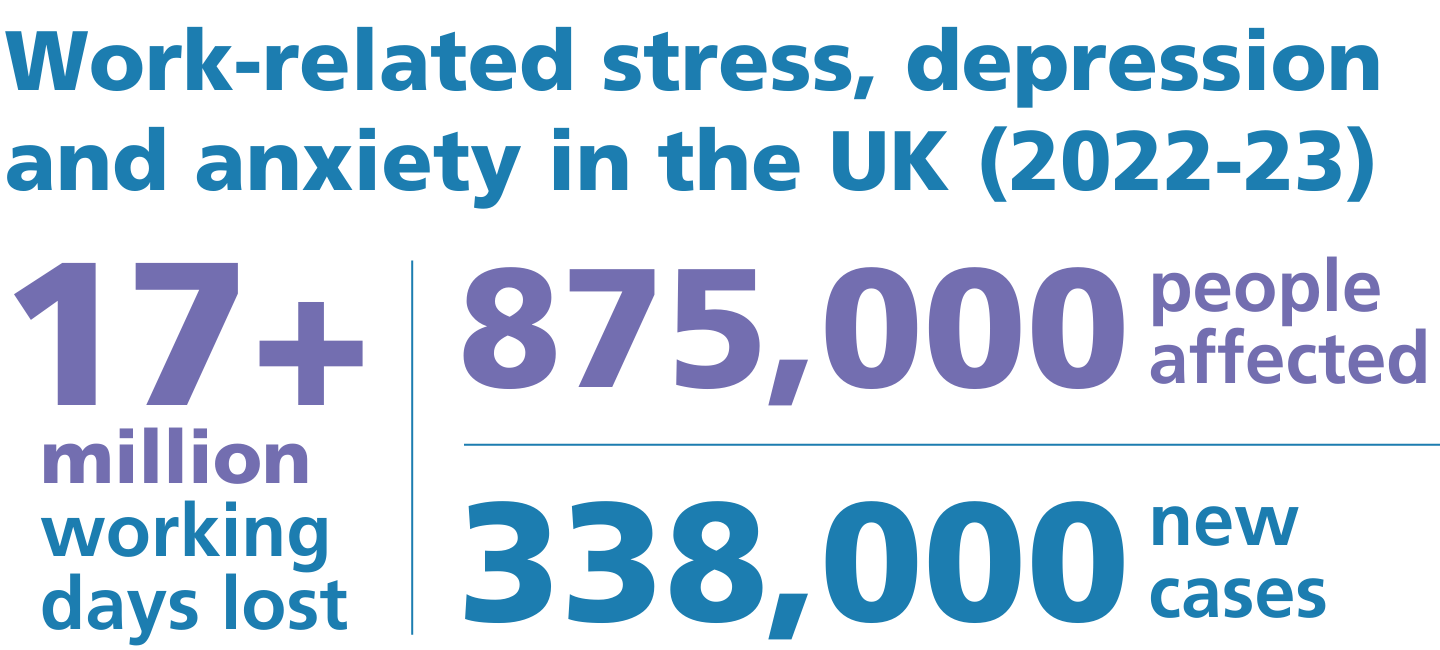In the Stevenson/Farmer review’s 10-year vision, “employees in all types of employment have good work, which contributes positively to their mental health, our society and economy”. It was hoped that the number of people leaving work with mental health problems could be reduced by 100,000.
Worryingly we are not seeing numbers reduce. In fact they are continuing to rise. The HSE’s focus on mental health comes at a time when the world of work is changing rapidly,10 with a rising informal economy, the damaging impacts of the Covid-19 pandemic on mental health11 and other macro changes that can have an impact on the health, safety and wellbeing of workers. We have also seen sickness absence jump to its highest in a decade12 with stress and mental health recognised as needing a continued focus.13 So we must act and we need a renewed focus on mental health and a commitment to collective effort and action.
The OSH Alliance has a goal to get mental health on employers’ agendas and to reduce the incidence of mental health issues in the workplace.
Mental health at work: UK trends
When we think of ‘safety’, the UK remains one of the safest places to work in the world, with the annual number of recorded work-related fatalities having fallen significantly in the half century since the introduction of the Health and Safety at Work Act. Yet it is still necessary to protect and strengthen health and safety standards in the UK because there continue to be incidents which we believe can and should be prevented.
When we think about the ‘health and wellbeing’ of workers, particularly mental health, the UK is falling behind when it comes to preventing and mitigating mental health risks. This has real impacts not only on individuals and their families, but also on businesses and the already-stretched National Health Service (NHS) and social care.
A recent study by the Centre for Mental Health, published in March 2024, showed that mental illness in England now costs the country £300 billion a year, up from £76.3 billion in 2002.14 This is a significant rise, even taking inflation into account.
Meanwhile, considering the impact on workers and work, in its most recent report, the HSE confirmed that in 2022-23 in the UK:
- 875,000 people were suffering from work-related stress, depression or anxiety, equating to around half of all reported workplace issues
- 338,000 people had suffered a new case of work-related stress, depression or anxiety
- over 17 million working days were lost to work-related stress, depression or anxiety.

The 2023 report by the Chartered Institute of Personnel and Development (CIPD), Health and wellbeing at work,15 identifies stress as one of the main factors that continue to cause short-term and long-term absence. Heavy workloads remain the most common cause of stress-related absence, followed by management style. Non-work factors (such as relationships, family and health issues) are among the most common causes for stress-related absence. The report identifies action being taken by employers, with the top two actions relating to the provision of employee assistance programmes and flexible working options.
It is encouraging to see that action is being taken, but absence continues to rise. There is the case here for more effort to be placed on preventative actions.

